From local community to an inclusive and caring neighbourhood with Hoplr
Private neighbourhood networks encourage involvement and primary care within the local community. In addition, community workers can use Hoplr to support their field work. This way, Hoplr contributes to the transformation of the local community into an inclusive and caring neighbourhood.
The ESN (European Social Network) agrees, as during the European Social Services Awards of 2020 with the theme “Transforming Community care”, it presented the Technology Tools Award to Hoplr!
- Digital neighbourhood networks increase social cohesion
- Hoplr stimulates neighbour help and care
- Horizontal bridge: dynamics between offline and online neighbourhood work
- Vertical bridge: link to local services
Ready for action? Read this article with 10 practical tips for community workers.
Digital neighbourhood networks connect neighbours and increase social cohesion
The most valuable efforts to connect a local communicty will always take place in the physical environment. Yet, digital neighbourhoods networks have an undeniable impact on the local sense of community and social cohesion.
Hoplr lowers the threshold so that connections between neighbours are created faster and more frequently. This increases the online sense of community, which has a direct impact on the overall sense of community. Finally, Hoplr stimulates encounters that take place in the physical environment.
1. Hoplr lowers the threshold towards neighbourhood contact
Digital neighbourhood networks facilitate neighbourhood contact. Hoplr offers citizens a large reach within the community, for example to ask a question for help or to give away an item. This increases the likelihood of a citizen turning to the neighbourhood for such matters.
Moreover, the threshold towards neighbourhood contact is a lot lower on Hoplr than it is in the physical environment. The digital network was deliberately developed to stimulate constructive interaction and involvement in the context of the neighbourhood. Hoplr connects neighbours to one another and their environment in the following ways:
- it serves as a virtual space in which citizens can get to know each other, arrange meetings and ask and answer questions for help;
- it is an environment in which local residents discuss their opinions about the neighbourhood and its issues; and
- it is a local social news medium that quickly disseminates information about the neighbourhood and its inhabitants.
“Before starting up our neighbourhood activities, we looked for a workable system to easily match the demand and supply of residents. Via Hoplr this turned out to be surprisingly quick. In a short time, many residents have joined their digital neighbourhood. This proves that there is a need for a neighbourhood forum to strengthen the neighbourhood feeling. Hoplr helps us to make Olen a warm, caring neighbourhood. ”
Liesbeth Lathouwers, Neighbourhood Care Local Government Olen
2. Online community feeling promotes the general sense of community
Both actively interacting and passively reading along contribute to the development of a local sense of community. This primarily affects members within the online environment of the neighbourhood network. At the same time, this has a spill-over effect to the physical neighbourhood, since members of the online neighbourhood network are also residents of the neighbourhood.
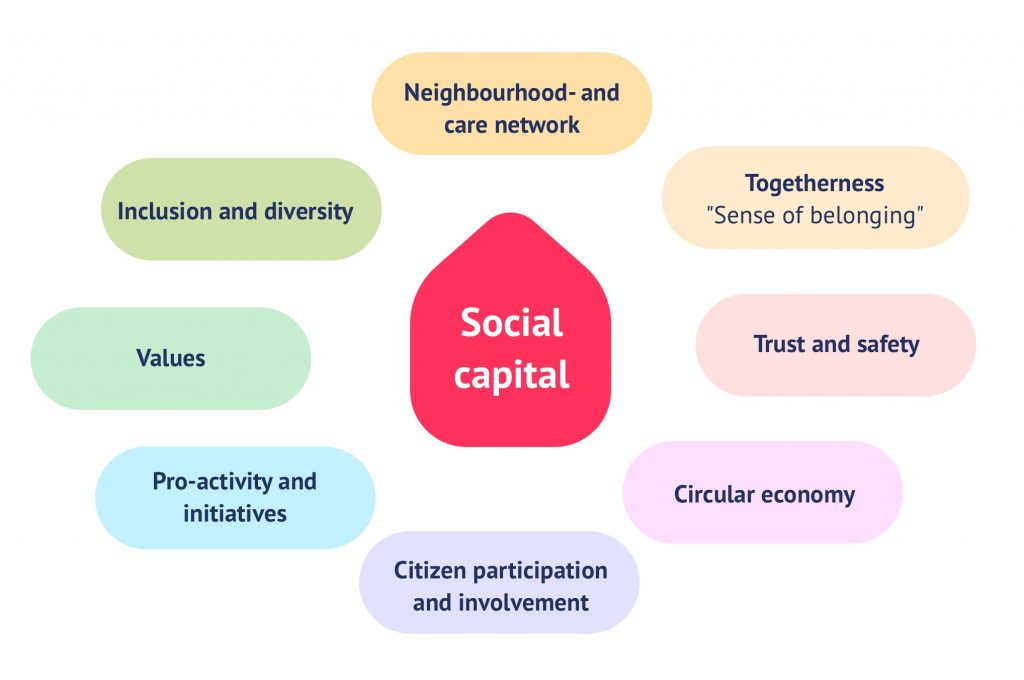
In addition, non-members benefit as well. An active neighbourhood network is beneficial to all dimensions of the neighbourhood, such as safety, inclusion, citizen initiatives,… which benefits the entire community. Finally, a close-knit community always takes care of its weakest members.
Before too long, I noticed more connectedness. I sometimes worry that people who move from the physical to the digital domain, may become isolated. Here I saw the opposite happening. Online messaging turned into recognition and conversations in the streets.
Eric Borst, Community building Municipality of The Hague
3. Hoplr stimulates offline meetings
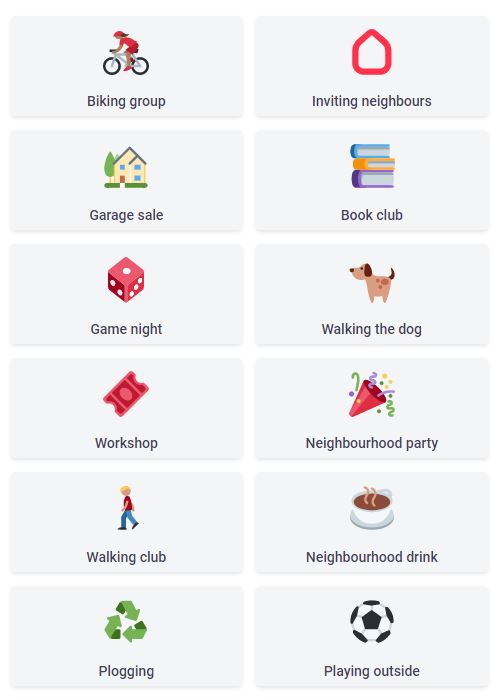
From connecting online to meeting offline. Offline contact is essential in order to strengthen social cohesion and activate the social capital. Hoplr stimulates encounters in three ways:
- Help offers and requests
- Neighbourhood activities
- Circular economy (exchange of goods and services)
Hoplr stimulates neighbour help and care
Hoplr’s neighbour help features make it easy for neighbours to offer their help and get listed on the local government’s volunteer list. Read all about neighbour help and the Hoplr neighbourhood care module here.

Not only does this make neighbour help easy, the digital environment offers two essential benefits in terms of neighbourhood care.
Firstly: observational learning. Even one visibly resolved online request for help can cause a ripple effect. Neighbours see what others have meant to each other, which makes it easier for them to direct their questions to the neighbourhood.
Secondly: reciprocity. Classic platforms that connect help offers and questions, focus on the person in need of help, the one who has ‘a problem’.
Asset Based Community Development focuses on the potential, the social capital of the neighbourhood. This way, the vulnerable person can step out of their role as a person in need of help. Because literally everyone has something to offer their community. And literally everyone needs help from time to time.
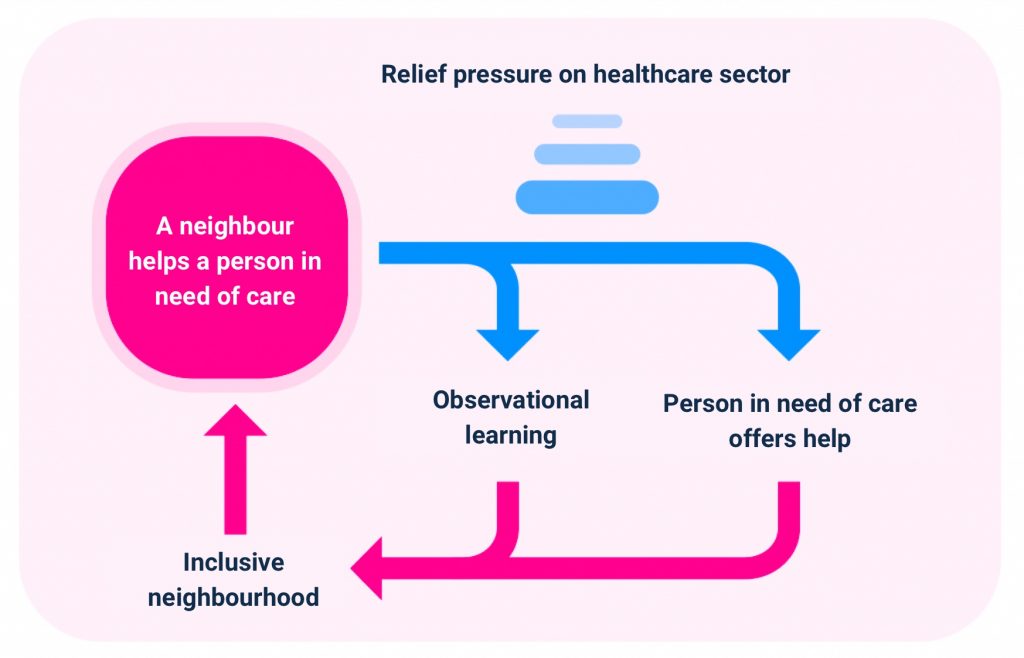
We always try to make Hoplr as user-friendly, accessible and inclusive as possible. We take into account the WCAG2.1 standards for people with disabilities when developing the website.
Horizontal bridge: exchange between offline and online community development
Community workers, community police officers, care providers and other similar profiles can join the digital neighbourhood network via an annual license for local governments.
They will get a verified account with neighbourhood switch. This makes clear their role within the community and allows them to alternate between the neighbourhoods of their operating area.
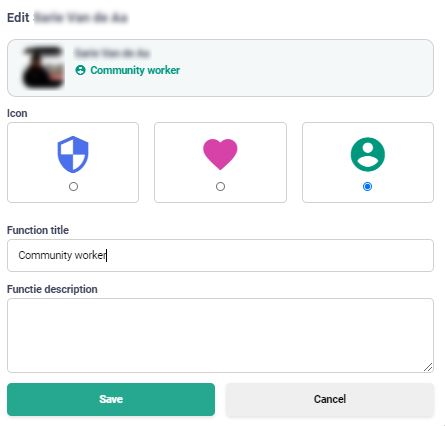
Both Hoplr and the community workers themselves benefit greatly from this collaboration.
Neighbourhood workers get value from Hoplr to the physical neighbourhood
Hoplr’s functionalities support social profiles in their efforts to bring together the local community.
- Overview. The neighbourhood feed shows an overview of all previously posted neighbourhood messages. In these messages, neighbours offer their help, give away items, launch neighbourhood initiatives,… You can consult these messages at any time to tap into the social capital.
- Reach. Via Hoplr, you can easily reach a large proportion of the neighbourhood members. You can share neighbourhood messages yourself to raise awareness, ask for help on behalf of community members, promote neighbourhood activities, call for volunteers, …
- Connection. The neighbourhood network makes it easy for you to connect citizens with each other. The chat allows you to initiate and moderate a conversation.
- Finger on the pulse. Via Hoplr you monitor healthcare questions, problems or topics discussed in the neighbourhood.
- Social inclusion. With the help of Hoplr you can connect neighbourhood residents to the social capital within the community, regardless of their background or skills. They can create an account (perhaps with some help from the Local Services Centre) or you (or a caregiver) can act as an intermediary.
- Local community feeling. As we stated above, a good online neighbourhood feeling has a positive impact on social cohesion. By stimulating the sense of community on Hoplr, you improve the general sense of community.
This article serves as a guide for community workers getting started with Hoplr.
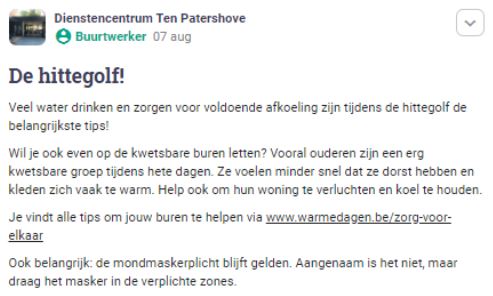
Community workers bring value to Hoplr
Conversely, the presence of community workers is very beneficial for the online community feeling. These social profiles carry out a number of functions on Hoplr.
- Connecting function. Based on the overview, you can connect Hoplr members with each other (help requestor with help provider, initiator with volunteer,…) – possibly across different neighbourhoods.
- Exemplary function. By making optimal use of the digital neighbourhood network yourself (completing your profile properly, sharing requests for help in the name of digital illiterates, …), you encourage members to do the same.
- Informing function. From your position, you can provide the neighbourhoods with relevant information about activities, opportunities,… or answer questions for information.
- Involving function. As a community worker, you are in contact with people who are not yet active on the digital neighbourhood network. If you find it beneficial, you can point them towards Hoplr and help them create an account.
- Capturing function. Not all questions shared in the Hoplr neighbourhoods can be answered by neighbours. You can capture these requests for help and pass them on to the right people. And that brings us to the last link of this story.

Vertical bridge: link to local government
The local government is the final piece of the puzzle towards an inclusive and caring neighbourhood. Through the Service Dashboard, governments can further build these local communities, using three modules.
Neighbourhood care
The neighbourhood care module connects neighbourhood workers to the Service Dashboard. That way, dashboard users can keep a finger on the pulse within the Hoplr neighbourhoods and fine-tune their communications. They themselves have no insight into the conversations. Conversely, community workers can inform the board about local problems or help questions.
The neighbourhood care module provides an overview of all volunteers in the Hoplr neighbourhoods. Local governments can call on these Hoplr users right through the chat. In addition, Service Dashboard users can launch calls within the neighbourhoods.

Read more about neighbourly help and the neighbourhood care module here.
Neighbourhood-oriented communication
Local governments can use the Service Dashboard to communicate with one, some or all of the connected Hoplr neighbourhoods. By informing, sensitizing, activating, educating,… they can further stimulate local awareness and engagement.

Conversely, local residents can communicate with the government by sharing reports, ideas and help requests.
View a number of examples of neighbourhood-oriented communication here.
Citizen participation
By increasing social inclusion, by shifting the focus from the individual to the community and by involving the silent majority, we are building the foundation for meaningful civic participation.
Meaningful citizen engagement enables the community to influence policy making and help shape the physical living environment, with attention for all its members. This is done top-down and bottom-up.
Bottom-up, members of the community can run their ideas and initiatives by the neighbourhood and share them with the local government.
Top-down, the local government can use a wide range of functionalities to survey citizens (including non-members).
Read more about Hoplr’s civic participation opportunities in this article.





